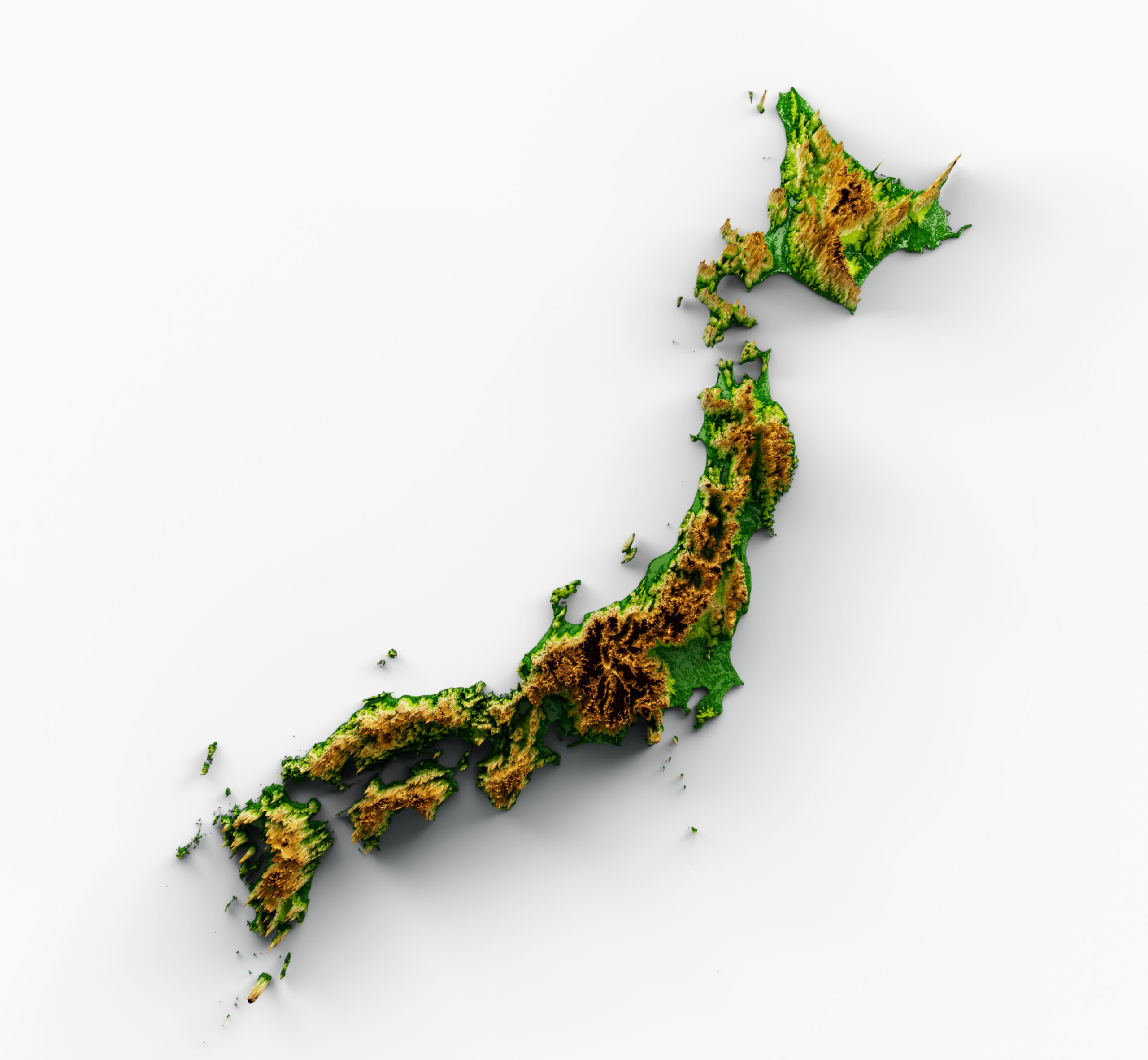Japan, a nation steeped in history and tradition, is equally renowned for its diverse and breathtaking landscapes. From the northern reaches of Hokkaido to the tropical shores of Okinawa, this geographic voyage uncovers the mysteries and marvels of Japan’s natural world. As we explore the snowy peaks, sandy beaches, and urban jungles, we’ll also delve into how the climate shapes these lands and the efforts to preserve their beauty for generations to come. Join us on a journey through the diverse landscapes of Japan, a true testament to nature’s artistry.
Unveiling Japan’s Geographic Mysteries: An Introduction
Japan’s geography is a tapestry of contrasts, woven from the threads of its rugged mountain ranges, dense forests, and sprawling urban centers. This archipelago, stretching over 3,000 kilometers from north to south, hosts a variety of ecosystems and climates, making it a hotspot for biodiversity and natural beauty. The country’s isolation has fostered the development of unique flora and fauna, while its location on the Pacific Ring of Fire shapes its dramatic landscapes through earthquakes, tsunamis, and volcanic activity. Japan’s complex geography has deeply influenced its culture, cuisine, and lifestyle, making the exploration of its lands a journey into the heart of its identity. As we embark on this voyage, we unveil the mysteries that make Japan a geographical marvel.
From Snowy Peaks to Sandy Beaches: Japan’s Extremes
Japan’s geographical extremes offer a world of contrasts within a single nation. In the winter, the northern island of Hokkaido is blanketed in snow, creating a paradise for skiers and snowboarders, while the southern prefecture of Okinawa basks in year-round tropical warmth, attracting beachgoers and divers. The Japanese Alps stretch through the central island of Honshu, presenting challenging peaks for climbers and hikers. Meanwhile, the flat plains of the Kanto region around Tokyo provide fertile ground for agriculture. These extremes are not just natural wonders but are integral to Japan’s cultural diversity, fostering different ways of life and traditions that vary dramatically from region to region.
The Northern Wonder: Hokkaido’s Untouched Wilderness
Hokkaido, Japan’s northernmost island, is a frontier of wild beauty and untamed wilderness. Its sparse population and vast landscapes offer a stark contrast to the crowded cities of southern Japan. The island is renowned for its pristine natural parks, such as Daisetsuzan, home to diverse wildlife and the indigenous Ainu culture. Hokkaido’s cold winters create some of Japan’s most spectacular snowscapes, drawing winter sports enthusiasts from around the globe. Summers, though short, burst with vibrant flowers and provide ideal conditions for hiking and exploring the great outdoors. This island’s untouched nature makes it a unique and essential part of Japan’s geographic and cultural identity.
Honshu’s Heart: Mountains, Forests, and Urban Jungles
Honshu, the largest and most populous island of Japan, is a microcosm of the country’s geographical diversity. It houses the towering Japanese Alps, dense and ancient forests, and the vast, sprawling metropolises of Tokyo, Osaka, and Kyoto. This island exemplifies the coexistence of Japan’s modernity with its natural beauty. Rural areas, such as the historic villages of Shirakawa-go and Gokayama, offer a glimpse into Japan’s past amidst stunning mountainous scenery. Meanwhile, the urban jungles of Tokyo and Osaka demonstrate how Japan’s geography has shaped and accommodated some of the world’s most populous cities.
Shikoku: Following the Pilgrim’s Path Through Nature
Shikoku, the smallest of Japan’s four main islands, is famous for its 88-temple pilgrimage route that encircles the island. This spiritual journey, covering about 1,200 kilometers, takes pilgrims through a variety of landscapes, including rugged mountains, lush forests, and along scenic coastlines. Shikoku’s geography has shaped this ancient path, making the pilgrimage a journey through the natural and cultural heart of the island. The island’s relatively remote location and challenging terrain have preserved its natural beauty, making Shikoku a hidden gem for those seeking a blend of spiritual rejuvenation and natural exploration.
Kyushu: Where Volcanic Landscapes Meet Hot Springs
Kyushu, the southwesternmost of Japan’s main islands, is a land sculpted by volcanic activity. This geological dynamism has created a landscape dotted with active volcanoes, such as Mount Aso, and numerous hot springs, like those found in Beppu, known as the "hot spring capital" of Japan. The island’s volcanic soil is highly fertile, supporting a rich agricultural tradition, while its hot springs have been a source of health and relaxation for centuries. Kyushu’s dramatic landscapes, from the caldera of Mount Aso to the sand baths of Ibusuki, offer a unique insight into the powerful natural forces that continue to shape Japan.
The Remote Beauty of Okinawa’s Tropical Paradise
Okinawa, a chain of islands stretching between Kyushu and Taiwan, offers a stark contrast to the rest of Japan with its tropical climate, white sandy beaches, and vibrant coral reefs. The unique Ryukyu culture, with its own language, customs, and cuisine, complements the natural beauty of these islands. Okinawa’s remoteness has preserved its distinct identity and biodiversity, making it a haven for endemic species and a paradise for divers and nature lovers. The islands’ history, including the tragic events of World War II, adds depth to the natural allure, making Okinawa a compelling destination for those seeking both beauty and historical insight.
Seasonal Splendors: Japan’s Changing Geographic Tapestry
Japan’s geography is intrinsically linked to its distinct seasons, each bringing its own beauty and challenges. Spring is celebrated with the blooming of cherry blossoms, a symbol of ephemeral beauty, while summer brings lush greenery and traditional festivals. Autumn colors transform the landscapes into vibrant tapestries of reds and yellows, and winter covers the northern regions in snow, offering stunning scenery and winter sports. These seasonal changes are not just cosmetic; they influence Japan’s agriculture, cuisine, and lifestyle, making the passage of seasons a key element of the country’s geographical and cultural identity.
Rivers and Lakes: The Lifelines of Japan’s Geography
Japan’s rivers and lakes play a crucial role in its geography, providing water for agriculture, industry, and daily life. The Shinano River, Japan’s longest, and Lake Biwa, its largest lake, are vital to the ecosystems and communities of Honshu. These water bodies have shaped human settlement patterns, agriculture, and transportation throughout Japan’s history. They are also central to many Japanese cultural practices and traditions, from the iconic river fireworks festivals of summer to the serene beauty of lakeside temples. Preserving these waterways is essential for maintaining Japan’s natural and cultural heritage.
Japan’s Coastal Elegance: A Journey Along the Sea
Japan’s extensive coastline, stretching over 29,000 kilometers, offers an array of natural wonders and recreational opportunities. From the rugged, cliff-lined shores of the Japan Sea to the gentle, sandy beaches of the Pacific, Japan’s relationship with the sea is deep and multifaceted. Coastal communities rely on the sea for food and livelihood, while beaches and islands are popular for relaxation and water sports. The coast is also a frontline for environmental challenges, facing issues from typhoons to erosion, making its preservation a priority for Japan’s future.
The Role of Climate in Shaping Japan’s Diverse Lands
Japan’s diverse climates, from the cold, snowy winters of Hokkaido to the subtropical warmth of Okinawa, are a driving force behind its geographic diversity. This climatic variation influences not only the natural scenery but also agriculture, cuisine, and lifestyle across the islands. Climate change poses significant challenges to Japan, threatening its coasts with rising sea levels, increasing the frequency of extreme weather events, and impacting its delicate seasonal rhythms. Understanding and adapting to these changes is crucial for preserving Japan’s rich geographic and cultural tapestry.
Preserving Beauty: Conservation Efforts Across Japan
As Japan faces the dual challenges of natural disasters and environmental degradation, conservation efforts are more important than ever. Initiatives to protect natural habitats, such as the reforestation of ancient woodlands and the conservation of coral reefs in Okinawa, are crucial for preserving biodiversity. Sustainable tourism practices are being promoted to balance economic benefits with the protection of natural landscapes. Japan’s approach to conservation combines modern science with traditional knowledge, aiming to maintain the harmony between its people and the natural world. These efforts ensure that Japan’s diverse landscapes can be enjoyed by future generations, continuing to inspire and nurture as they have for centuries.
Our geographic voyage through Japan reveals a land of unparalleled diversity, where every island and season tells a story of natural beauty, cultural depth, and environmental resilience. From the snow-capped mountains of Hokkaido to the tropical beaches of Okinawa, Japan’s landscapes invite exploration and reflection. As we’ve journeyed through its wilds and cities, we’ve seen how geography shapes culture, lifestyle, and tradition in profound ways. The challenges of climate change and environmental degradation make the conservation of these landscapes more critical than ever. By understanding and appreciating the diverse landscapes of Japan, we can contribute to their preservation and ensure they continue to inspire for generations to come.




